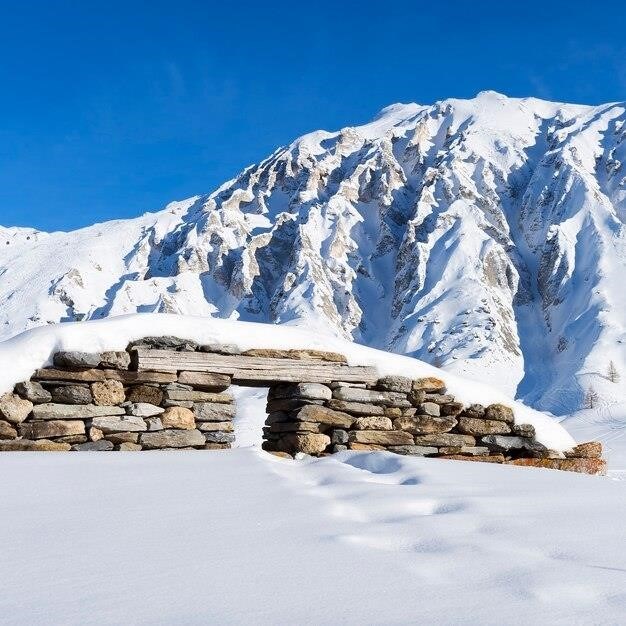The Snows of Kilimanjaro⁚ An Overview
The Snows of Kilimanjaro is a short story by Ernest Hemingway, first published in 1936. It tells the story of Harry, a writer who is dying of gangrene in Africa, and his wife, Helen. The story explores themes of death, artistic creation, and the past, and is considered one of Hemingway’s most famous works. The story is told in the third person and is rich with dialogue. The Snows of Kilimanjaro was Hemingway’s first major work after his divorce from his first wife, Hadley, and was widely seen as a reflection of his own life and career at the time. The story was later adapted into a film starring Gregory Peck and Ava Gardner. It remains a popular and influential story, often studied in high school and college literature courses.

Introduction
Ernest Hemingway’s “The Snows of Kilimanjaro” is a powerful and evocative short story that delves into the complexities of human existence, particularly the themes of death, artistic creation, and the weight of the past. The story follows Harry, a renowned writer, as he lies dying of gangrene in the African wilderness, reflecting on his life, his career, and his regrets. Hemingway masterfully uses the stark and unforgiving setting of the African plains to heighten the emotional intensity of Harry’s introspection. He explores the profound questions that plague us all⁚ What is the legacy we leave behind? How do we reconcile our dreams with the realities of life? What is the true value of our artistic endeavors? “The Snows of Kilimanjaro” offers no easy answers, but it compels us to confront these questions with a poignant and unforgettable narrative.
Ernest Hemingway Biography
Ernest Hemingway, the author of “The Snows of Kilimanjaro,” was born in Oak Park, Illinois, in 1899. He rose to prominence in the 1920s as a leading figure of the “Lost Generation,” a group of American writers disillusioned by the aftermath of World War I. Hemingway’s writing style, characterized by its stark simplicity, directness, and focus on themes of masculinity, war, and the human condition, profoundly influenced 20th-century literature. He served as an ambulance driver during World War I, an experience that profoundly shaped his writing. He later covered the Spanish Civil War as a journalist, further deepening his understanding of violence and human suffering. Hemingway’s works, including “The Sun Also Rises,” “A Farewell to Arms,” and “For Whom the Bell Tolls,” are considered classics of American literature and continue to resonate with readers today.
Summary
“The Snows of Kilimanjaro” follows Harry, a renowned writer, and his wife, Helen, as they are stranded on a safari in Africa. Harry is dying of gangrene, a consequence of a neglected wound sustained during a hunting trip. As he lies on his deathbed, Harry reflects on his life, his career, and his regrets. He bitterly recalls his past failures and the compromises he made for financial security, sacrificing his artistic integrity for material comfort. The story delves into Harry’s memories of his adventures, his loves, and his struggles with his writing. He grapples with his inability to fulfill his artistic ambitions, wondering if he has wasted his talent and potential. In his final moments, he yearns for redemption and a chance to reclaim his creative spirit. The story ends with Harry succumbing to his illness, leaving behind a legacy of both accomplishment and unfulfilled dreams.
Characters
The Snows of Kilimanjaro features a small cast of characters, each contributing to the story’s poignant exploration of themes such as death, artistic ambition, and regret. The central figure is Harry, a writer struggling with a fatal illness and the weight of his past choices. He embodies a sense of disillusionment and longing for artistic fulfillment, grappling with the consequences of sacrificing his creative integrity for material comfort. Helen, Harry’s wife, is a wealthy and glamorous woman who provides a stark contrast to Harry’s introspective nature. She represents a different set of values and priorities, highlighting the complexities of their relationship. The story also features minor characters such as the safari guide and the native porters, who serve as silent observers of Harry’s decline and the stark realities of the African wilderness. These characters, though limited in their appearances, contribute to the story’s atmosphere and underscore the themes of mortality and the inevitability of fate.
Themes
The Snows of Kilimanjaro is a rich tapestry of themes, woven together by Hemingway’s masterful prose and the poignant narrative of a dying man. One of the most prominent themes is the struggle between artistic ambition and the demands of a materialistic world. Harry, the protagonist, is a writer haunted by the regret of choosing financial security over creative freedom. He grapples with the consequences of his choices, reflecting on his wasted potential and the missed opportunities to live a life dedicated to his art. The theme of death is omnipresent, casting a shadow over the story. Harry’s impending demise serves as a catalyst for introspection, forcing him to confront his mortality and the meaning of his life. The story explores the different ways people approach death, from Harry’s bitterness and regret to Helen’s detached acceptance. The theme of memory also plays a crucial role, as Harry’s recollections of his past are intertwined with his present circumstances. These memories serve as a window into his regrets, revealing the choices that led him to his current predicament and the impact of his past on his present state.
Style
Hemingway’s signature style, characterized by its stark simplicity and directness, is on full display in The Snows of Kilimanjaro. His prose is devoid of unnecessary embellishment, relying on precise language and vivid imagery to create a powerful and evocative narrative. He employs short, declarative sentences, creating a sense of immediacy and urgency that mirrors the protagonist’s deteriorating condition. The story is marked by its sparse dialogue, often consisting of terse exchanges that reveal character and tension without excessive exposition. Hemingway’s use of symbolism is subtle but impactful. The frozen leopard on Kilimanjaro serves as a powerful metaphor for Harry’s own frozen state, both physically and creatively. The story’s setting in Africa adds a sense of isolation and grandeur, mirroring the protagonist’s internal struggle with his mortality and artistic legacy. Hemingway’s distinctive style in The Snows of Kilimanjaro is a testament to his mastery of minimalist storytelling, creating a timeless work that resonates with readers even today.
Historical Context
The Snows of Kilimanjaro was written in 1936, a time of significant societal and political upheaval. The world was still grappling with the aftermath of World War I, and the rise of fascism in Europe cast a long shadow over the international landscape. Hemingway, a veteran of the war, was deeply affected by the violence and disillusionment of the era, and these themes are reflected in his writing. The story was also written during a period of great change in Hemingway’s personal life. He had recently divorced his first wife, Hadley, and was struggling with his own artistic and personal identity. His experiences in Africa, where he went on safari in the 1930s, provided him with the inspiration for the story’s setting. The Snows of Kilimanjaro is thus a product of its time, reflecting the anxieties and uncertainties of a world on the brink of war, and the personal struggles of a writer coming to terms with his own mortality and legacy.
Critical Overview
The Snows of Kilimanjaro has received mixed critical acclaim since its publication. Some critics praise Hemingway’s minimalist prose and his exploration of themes of death, artistic creation, and the past. They admire his ability to capture the raw emotions of his characters and his unflinching portrayal of the human condition. Others have criticized the story’s perceived lack of plot, its reliance on symbolism, and its pessimistic outlook. They argue that Hemingway’s prose is too spare and that his characters are too self-absorbed. Regardless of individual opinions, the story’s enduring popularity and its place in the American literary canon attest to its power and influence. The Snows of Kilimanjaro has inspired countless essays, articles, and critical interpretations, and continues to be a source of debate and discussion among literary scholars and general readers alike.
Essays and Criticism
The Snows of Kilimanjaro has generated a vast body of essays and criticism since its publication. Many critics have focused on the story’s themes of death, artistic creation, and the past, analyzing how Hemingway uses symbolism and imagery to explore these ideas. Others have examined the relationship between Harry and Helen, exploring their complex dynamic and the ways in which their past influences their present. Still others have focused on the story’s style, examining Hemingway’s minimalist prose and his use of dialogue. The Snows of Kilimanjaro has also been read through a feminist lens, with critics analyzing the story’s portrayal of female characters and the ways in which they are marginalized or objectified. These diverse perspectives demonstrate the story’s enduring power and its ability to resonate with readers across different generations and cultures.

The Snows of Kilimanjaro⁚ A Closer Look
This section delves deeper into the story’s key elements, providing a more nuanced understanding of its themes, characters, and narrative structure.
The Setting
The setting of “The Snows of Kilimanjaro” plays a crucial role in establishing the story’s atmosphere and symbolism. The story takes place in the vast and wild African savanna, specifically on the slopes of Mount Kilimanjaro, the highest mountain in Africa. This exotic and remote location adds to the sense of isolation and impending doom that permeates the narrative. The stark contrast between the beauty of the African landscape and the harsh reality of Harry’s deteriorating condition underscores the fragility of life and the inevitability of death. Kilimanjaro itself serves as a powerful symbol, representing both the grandeur of nature and the unattainable heights of artistic achievement. The icy summit of the mountain, where the frozen carcass of a leopard rests, becomes a metaphor for Harry’s own frozen state, both physically and creatively. The setting, therefore, acts as more than just a backdrop; it actively shapes the story’s themes and enhances its symbolic depth.
The Symbolism
Hemingway’s “The Snows of Kilimanjaro” is rich with symbolism, which adds depth and complexity to the story’s themes. The most prominent symbol is Mount Kilimanjaro itself, representing both the grandeur of nature and the unattainable heights of artistic achievement. The frozen carcass of the leopard on the summit, discovered by climbers, mirrors Harry’s own frozen state, both physically and creatively. The leopard, once a powerful predator, now lies lifeless, symbolizing Harry’s inability to achieve the artistic success he once desired. The hyenas, drawn to Harry’s decaying body, represent the vultures of the literary world, circling and waiting to pick apart his reputation. Additionally, the safari setting, with its vast wilderness and harsh realities, symbolizes the challenges and risks of pursuing a life dedicated to art. The story is a meditation on the struggle between ambition and the limitations of mortality, a struggle that Hemingway himself faced in his later years.
The Narrative Structure
Hemingway employs a unique narrative structure in “The Snows of Kilimanjaro,” shifting between the present and the past to delve into Harry’s thoughts and memories. The story unfolds in a fragmented, non-linear fashion, mirroring the disjointed nature of Harry’s dying mind. The present, set on the African safari, is juxtaposed with flashbacks to Harry’s past experiences, his regrets, and his lost opportunities. These flashbacks serve as a means for Harry to confront his past failures, particularly his inability to fully dedicate himself to his writing. The narrative structure also allows for the exploration of Harry’s inner turmoil, his struggle with death, and his desire to redeem himself through his art. This unconventional structure creates a sense of urgency and immediacy, as Harry’s life is slowly slipping away, leaving him with little time to confront his regrets.
The Relationship Between Harry and Helen
The relationship between Harry and Helen is a complex and multifaceted one, marked by both love and resentment. Harry’s bitterness towards Helen stems from a deep-seated feeling of being trapped in a marriage that prioritized financial security over his artistic ambitions. He resents her wealth and the way it allowed him to escape responsibility, ultimately hindering his writing. Helen, on the other hand, is portrayed as a dutiful wife who loves Harry despite his flaws and struggles. She nurses him through his illness, displaying a sense of compassion and loyalty. However, their relationship is strained by Harry’s constant criticism and self-pity, creating a sense of emotional distance between them. The story hints at a past filled with arguments and unspoken frustrations, leaving the reader to ponder the true nature of their bond and the complexities of their dynamic.
The Role of Memory
Memory plays a pivotal role in “The Snows of Kilimanjaro,” serving as a constant companion for Harry as he faces his impending death. It’s not simply a nostalgic journey through the past, but a tool for introspection and self-judgment; As Harry drifts in and out of consciousness, his memories become fragmented, revealing a tapestry of past experiences, both glorious and regretful. These memories are often tinged with bitterness as he reflects on his wasted opportunities and the compromises he made for financial security. He relives moments of adventure and passion, contrasting them with his current state of disillusionment. Through these recollections, Harry grapples with the consequences of his choices and the weight of his unfinished business, highlighting the power of memory to shape both regret and redemption in the face of mortality.
The Themes of Death and Artistic Creation
The Snows of Kilimanjaro is a profound exploration of the interconnectedness between death and artistic creation. Harry, a writer facing his mortality, finds himself grappling with the legacy he will leave behind. As he reflects on his life, he recognizes the missed opportunities and the compromises he made for financial stability, hindering his artistic fulfillment. Hemingway uses the setting of the African savanna, a place of both beauty and harshness, to highlight the fragility of life and the inevitability of death. Harry’s struggle to reconcile his artistic aspirations with the realities of his fading life becomes a poignant commentary on the artist’s quest for meaning and the impact of mortality on creative expression. The story ultimately raises questions about the nature of artistic legacy, the importance of authenticity, and the enduring power of the human spirit even in the face of death.



